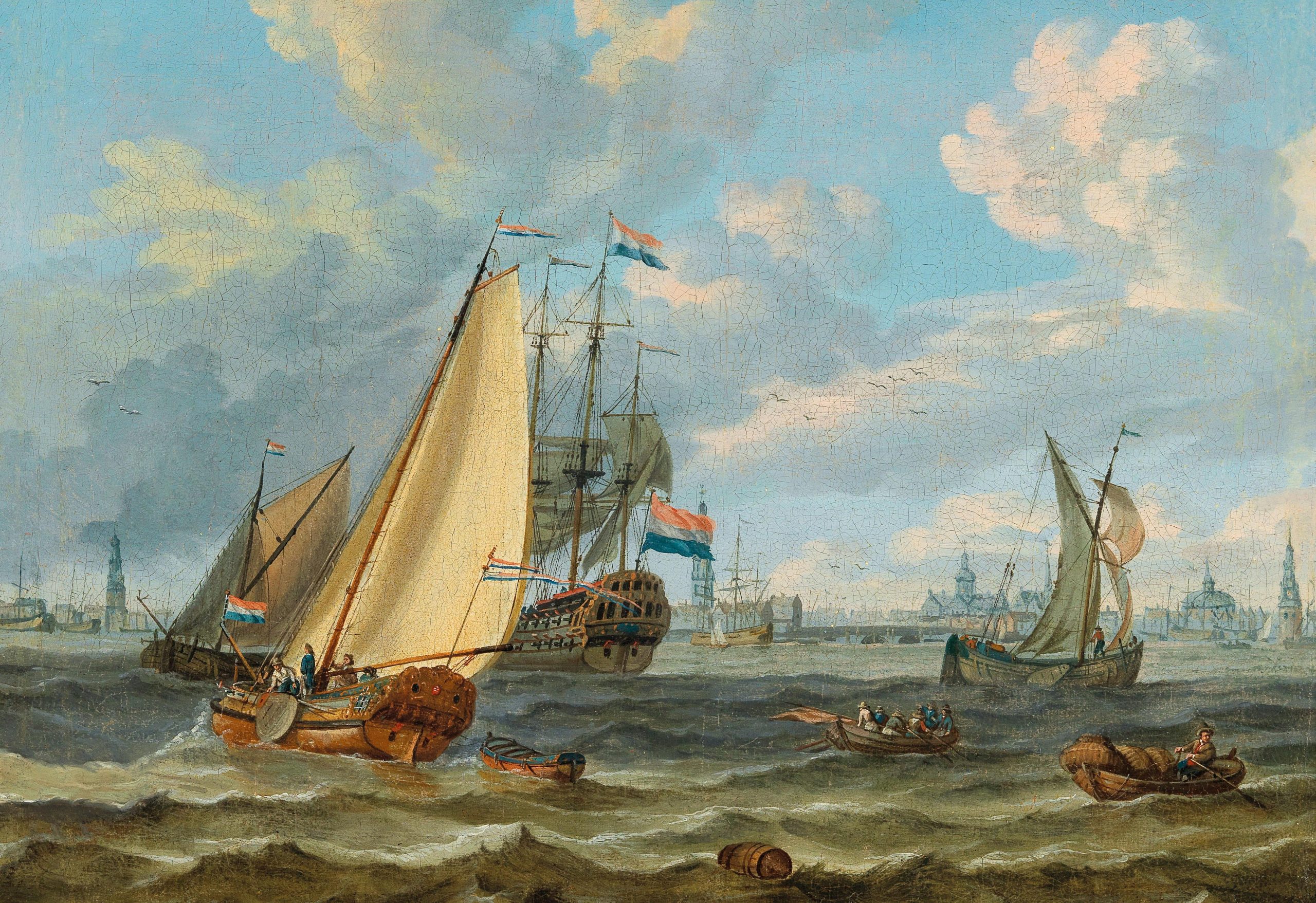Diamond Prices
Read more
Interesting Rise And Decline Of The Amsterdam Diamond Market
Nowadays, when you think about where to buy your diamond, you might think of Antwerp. But did you know the Diamond Capital of the world was once Amsterdam? For over 300 years the Dutch capital was the home of renowned diamond masters and traders. These diamond masters were for the most part Sephardic Jews who had fled the Inquisition and come to Amsterdam. The Netherlands has been one of the most religiously tolerant places in Europe since the Middle Ages. Thus, it became a haven for the Jews who were fleeing persecution. They, in turn, helped the diamond trade flourish, turning Amsterdam into a rich and powerful city. The Dutch Capital was ‘The City of Diamonds’ for over 300 years until the title passed to Belgium’s Antwerp.
In this article you will find:
- Origins of the Diamond Trade in Amsterdam
- Famous Gems from ‘the City of Diamonds’
- Amsterdam’s Decline in the Diamond Trade
- The International Diamond Market Today
Origins of the Diamond Trade in Amsterdam
The long road to Amsterdam
When talking about the history of Amsterdam as a city of diamonds, one cannot ignore the integral influence of its Jewish people. Their story goes back to Spain and Portugal in the 1500s where they already were renowned goldsmiths and diamond traders. The Inquisition in the Iberic Peninsula forced them to choose between expulsion or conversion. A majority of Sephardic Jews found a new home in Antwerp and Amsterdam and brought with them their gem trading expertise and connections.
The two cities allowed the Sephardic Jewish communities to practice their religion freely. They were not allowed to own land and enter the guilds of many crafts and professions. They could only practice ‘the free professions’, amongst which trading. It is worth mentioning that their craftsmanship and expertise are often credited for having brought fame and fortune to both cities for centuries to come.
Ships from all around the world arrived at the ports of Antwerp, making it the most powerful trading center in Europe at that time. In the 1500s, roughly 40% of the world’s trade passed through the ports of Antwerp. Moreover, gem cutting was very rare in Europe at that time, which made Antwerp even more famous. However, this Golden Age of finance and wealth also brought political unrest. The culmination of violence became known as the Spanish fury that occurred all over the Lower Countries. In Antwerp, during the month of November 1576, about a thousand buildings were torched, and 17,000 men, women, and children were murdered.
This event was probably the reason why the majority of diamond masters moved to Amsterdam. This relocation of specialized labor ultimately made the city the most important center of diamond trading in Europe. A third of the Jewish community was involved in the diamond trade, which made up a large portion of the city’s economy. The old Jewish quarter can still be found today in the heart of Amsterdam just next to the Amstel river. The quarter is surrounded by canals on all sides – Nieuwe Herengracht, Oudeschans, and the Oosterdok.
Willem Vermaet – the first documented diamond trader in Amsterdam
There is not a lot of surviving documentation about the diamond trade in Amsterdam until the 15th of November 1586. On that date, Willem Vermaet, a diamond worker, was entered into the city’s marriage registers with the job title ‘diamond worker’. Vermaet was one of the citizens of Antwerp, who fled the Spanish Fury in 1585. He was a diamond trader who continued his craft in Amsterdam. This was the first document proving Amsterdam’s place in history as a diamond trade center.
Famous Gems From Amsterdam ‘The City of Diamonds’
During Amsterdam’s reign as the ‘City of Diamonds’, its diamond industry produced and handled some of the most famous stones in the diamond trade history. We have handpicked four of the most dazzlingly enchanting diamonds that were handled in Amsterdam.
The Orlov Diamond and Catherine The Great (189.62 carats)
The Orlov, named after Count Grigori Orlov, has an interesting history. Legend has it that the stone was the eye of a temple statue in Madras – a former Indian state. A French soldier allegedly stole it in the mid-18th century. The diamond traveled around the world and eventually found its way to Amsterdam in 1767. It was described as a ‘small Bantam hen’s egg’.
Many scholars believe that the Orlov Diamond could be the infamous Great Mogul Diamond. Once it was in the Netherlands, the diamond was bought by Count Orlov from whom the stone got its name. The count bought it as a token of his appreciation for Russian Empress Catherina II (Catherine The Great). He was hoping that she would reciprocate his love.
The Empress accepted the gift but not Count Orlov. She had the diamond set in the Imperial Scepter where it remains to this day. It is currently on display in Moscow’s Kremlin Armory as part of the Diamond Fund Collection.
The Koh-I-Noor and the British Royal Family (105.6 carats)
The Koh-I-Noor is one of the most famous diamonds in the whole world. At 105.6 carats in weight, it is one of the largest cut diamonds in existence. When it first appeared on display in 1851 at the Great Exhibition in London it did not impress viewers much with its cut. Prince Albert (Queen Victoria’s husband) purchased it. He then sent it to Coster Diamonds in Amsterdam to be recut as an oval brilliant. Queen Victoria wore the diamond until her death.
It was passed on to her female descendants. Interestingly, this is due to the diamond’s bloody history before arriving in the possession of the Crown. The British Royal Family believed that it brings bad luck to any men who wear it. That is why it has only been worn by women since its purchase. The Koh-I-Noor’s last place was in Queen Elizabeth’s (the Queen Mother) crown where it has remained. It is available to see in the Jewel House at the Tower of London.
The diamond, most probably, originated in India. Since the country gained independence from the UK, the governments of India, Pakistan, Iran, and Afghanistan have asked for the Koh-I-Noor to be returned to them. They believe they are the rightful owners. The Crown has refused all requests, stating that the diamond was legally acquired. Thus, it is the rightful property of the British Royalty.
The Amsterdam Diamond
One of the rarest gems in the world – the black 33.7 carats Amsterdam Diamond. It was discovered in South Africa in the 1970s. Its color, weight, and hardness were so rare and impressive, it may be the only diamond of its kind ever to be found in South Africa. The destiny of the stone was to be turned to diamond dust or to be broken into smaller pieces.
The characteristics of it, though, were so impressive that the Amsterdam Diamond Cutters – D. Drukker & Son – who purchased the stone in 1972, decided to cut and polish it as a gem. The City of Amsterdam celebrated its 700 anniversary so the stone was named ‘The Amsterdam Diamond’ in honor of it. It was cut in a pear shape. Unlike other black diamonds, the Amsterdam one remains very opaque under a light making it remarkably lustrous. This contributes even more to its uniqueness. Since the 70s the diamond has appeared in numerous exhibitions.
The Asscher Cut
Although not a diamond in itself, the Asscher cut is one of the most classic and sought-after diamond cuts so we decided to make it part of our famous diamonds from Amsterdam. It was first patented in 1902 by Joseph Asscher from Amsterdam. Also known as the square Emerald Cut, the cut became largely popular during the Art Deco period, the shape was very appealing and fitting to the style. Since the patent expired during the 2nd world war, most diamond cutters are tough to cut the Asscher cut. Nowadays, the cut is more popular than ever and can be found all over the world.
Amsterdam’s decline in the diamond trade
The diamond trading industry flourished in Amsterdam for centuries. This was largely due to the city being a haven for Jewish communities, which specialized in the diamond trade. However, as the Second World War reached the Netherlands, Amsterdam stopped being a safe place for Jews.
The impact of World War II, from Amsterdam back to Antwerp
Nazi Germany brought its policies of racial segregation to the Netherlands in 1940. This led to the systematic robbing of Jewish people of all of their possessions and ultimately their deportation to death camps. Of the 140,000 Dutch Jews living in the Netherlands, less than 25% survived the Nazi occupation. The morbid statistics of holocaust casualty rates show that this is particularly high for a Western European city.
The Amsterdam diamond district never recovered from this loss. In the aftermath of the Holocaust, the Jewish diamond workers who had survived decided to start anew in Antwerp. The main reasons for this were economic. The city of Antwerp offered fiscal incentives to diamond traders which were crucial for traders who had to build their businesses back from scratch.
The Netherlands did little to protect its Jewish people from deportation. Meanwhile, the non-Jewish Antwerp population protested in large numbers and resisted the measures taken against its Jewish people during the occupation. Although losses were severe in both countries, the disparity in casualty rates is highly significant.
Amsterdam’s legacy
Due to its rich history with diamonds, the Dutch city maintains a few ties to the diamond polishing tradition. The fame of diamonds such as the Koh-I-Noor and the Cullinan still echoes. However, Amsterdam lost its status as a diamond trading center and no longer holds a relevant position in the industry.
The International Diamond Markets Today
Today Antwerp is the diamond capital of the world. It is reported that the square mile of its ‘Diamond Quarter’ houses about 1,600 diamond traders. With its four diamond exchanges, Antwerp controls 86% of the world’s trade in rough diamonds and 50% of the trade-in polished diamonds.
New York and Tel Aviv have established themselves as secondary diamond trading centers, due to resettling of many diamond-trading Jewish families during the second world war outside the old continent.
Recently Mumbai and Hong Kong also reached the level of secondary international markets. However, due to its unparalleled diamond workforce, Antwerp is still the go-to place for diamond buyers around the world.
For Diamond Enthusiasts
Buying a diamond can be an adventure in itself if you are ready to travel and search for the ideal match. If you are looking for an authentic experience, consider visiting the modern diamond capital of the world – Antwerp. At Ajediam, it will be our pleasure to help you find the perfect diamond! Contact the Ajediam Team now.



